MODELS

| e-BUSINESS
MODELS |
 |
| .. | This unit is used in
|
| . | Not all of the material in this unit will be used in each of these courses; the amount of material covered will be indicated by the actual lecture given in class by the professor. Some courses cover this topic extensively, some courses deal with it briefly. |
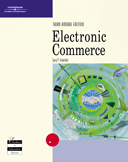 |
Schneider/Perry
Electronic Commerce 3rd Edition Chapter 8 (in 2nd edition) Chapter 3 (in 3rd edition) |
. | 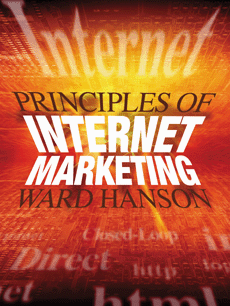 |
Hanson: Principles of Internet Marketing Chpt 5 |
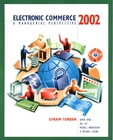 |
Turban: Electronic Commerce: A Managerial Perspective 2002 Edition | 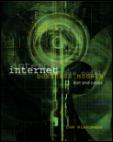 |
Internet
Business Models : Text and Cases
by Dr. Thomas R. Eisenmann, Harvard Business School If we had the time for several lectures on business models, this would be a good book to use. |
|
 |
Internet
Business Models and Strategies: Text and Cases
Dr. Allan Afuah, Dr. Chris Tucci we used Chpts 4 and 5
|
 |
"There is nothing more difficult
to take in hand, more perilous to conduct, or more uncertain in its success,
than to take the lead in the introduction of a new order of things"
Nicollo Machiavelli sixteenth
century Florentine philosopher
|
| . | "According
to www.dotcomfailures.com, the number one reason (47%) dot com owners stated
for failing is a faulty business model. (A business model is the strategy
by which a company plans to make and sustain its income.)
"it is getting harder for
companies to deliver profitable growth on a sustained basis. It is also
more difficult for many companies to hold their ground and not fall
behind. The key reasons include the dramatic increase in complexity in
managing business and the increasing premium put on innovation. The complexity
is due to significant and irreversible changes in the business environment.
The pace of business is accelerating beyond the ability of most corporations
to adjust. "
|
| .Introduction | Several of the texts we
use in this course discuss Web Business Models. Some discuss the model
in terms of
WTGR |
 |
 |
 |
 |
 |
| Provider based
revenue models
User pay based revenue models |
The Web Catalog
Advertising-Supported Advertising-Subscription Mixed Fee-for-Transaction Fee-for-Services Revenue |
Direct Marketing vs Indirect
Marketing
Full Cybermarketing vs Partial Cybermarketing Electronic Distributor vs Electronic Broker Electronic Store vs Electronic Shopping Mall Generalized E-malls/stores vs Specialized E-malls/stores Proactive vs Reactive Strategic Posture toward Cybermarketing Global vs Regional Marketing Sales vs Customer Service |
Internet Access
Providers
Online Portals Online Content Providers Online Retailers Online Brokers Online Market Makers Networked Utility Providers Application Service Providers |
Brokerage model
Advertising model Infomediary model Merchant model Manufacturing model Affiliate model Community Model Subscription Model Utility Model |
| Witiger's summary of all
the e-Business Models
First, divide the list according to whether it is a physical product or a service - many services can be sold online and areunique to the Internet world, many of the products sold online simply use the Internet as another form of advertising and the "model" is not so special. The second thing to
do is divide the list according to whether the product/service is for business2business
purposes, or for consumers direct - the differences are huge. An online
website listing plastic autoparts will require a completely different model
than a website selling DVD movies to individual customers.
|
 |
Hanson: Principles
of Internet Marketing Chpt 5 Web Business Models
(not a required
text)
http://simi.stanford.edu/hanson/chapter5.html Revenue based business models
p. 131- 132 Hanson text
|
 |
Internet
Business Models and Strategies: Text and Cases
Dr. Allan Afuah, Dr. Chris Tucci Afuah
and Tucci's Taxonomy of Business Models
|
|
Business Models 3rd edition
|
Schneider/Perry
Electronic Commerce
|
|
1st edition 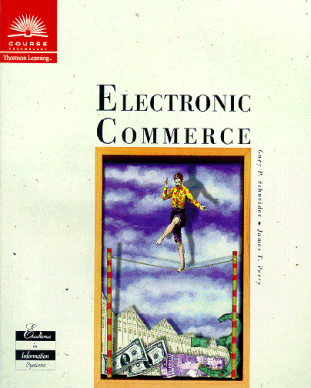
Business
2nd edition
Business
3rd edition
|
Schneider/Perry
Electronic Commerce
Chapter 8 (in 2nd edition), Chapter 3 (in 3rd edition) The 3rd Edition opens with
an example of Apparel Retailers using the web
the models described herein are
( in the 2nd edition they called this "Sell Goods and Services") (called "Sell Information or Other Digital Content" in the 2nd edition)
|
|
Channel Conflict and Cannibalization 3rd edition
|
Schneider/Perry
Electronic Commerce
"Companies that have existing sales outlets and distribution networks often worry that their web sites will take away sales from those outlets" page 90 Schneider, 3rd Edition Example of how you avoid cannibalization Larkhill.com gets many more hits on its website that does the small stores carrying the product - however Larkhill does not sell its clothing online
- see http://www.larkhill.com/retailers.htm |
||
| Cannibalization | 
article in BusinessWeek, July 5, 1999 http://www.businessweek.com/ebiz/9907/ep0705.htm "There's a reason that retailers
are so hesitant to push their online channels. They're
written by ellen_neuborne@ebiz.businessweek.com
|
.
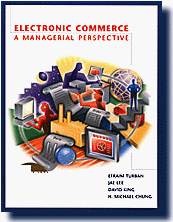
|
Turban: Electronic
Commerce: A Managerial Perspective, is not a required purchase,
but it does have several chapters that mirror topics we discuss from other
texts in this course + it has an accompanying web site + dowloadable .ppt
slides for each chapter
Internet
Business Models
The following are the "perspectives" that compose the e-business models, according to the book's authors
|
| .
.................... |
Virtual companies as
a business model
|
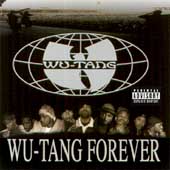 . . |
Virtual companies as
a business model
. Virtual companies are not just contained to the IT business world but exist in many types of formats in business throughout the globe. One example of the diversity in applying virtual companies as a concept is the famous rap group Wu-Tang Clan.
As TIME magazine noted, (Dec 11th issue, 2000) "The Wu-Tang "brand" blossomed in 1993. Each member of the group periodically goes off and does some solo project from which they develop additional capability and experience, at the same time keeping public their alliance and affiliation with Wu-Tang. The "brand", in the form of the bands members, continue to also put out products under the bands name as well in order to maintain the value of the "base" of their individual reps. The
strength of the company, as explained in TIME, is "... maintaining just
a small core and outsourcing everything else."
The band members have so many sites devoted to their activities that Yahoo has devoted an entire Yahoo category to them http://dir.yahoo.com/Entertainment/Music/Artists/By_Genre/ Rap_and_Hip_Hop/Wu_Tang_Clan/Band_Members/ "Everything
else" is their forays into video games, clothing, comics, movies and many
other constantly new and evolving merchandise crossing over and back into
music, video, movies and the internet.
|
| Business
models and the patenting of them |
Business models and the
patenting of them
"Patents on Internet Business
Models"
"Why should you care?" Why? Because you'll find out, that most, if not all of the business practices that are completely common and obvious on the Internet today... will have been PATENTED by corporate behemoths like Amazon.com or Priceline.com... making it outright ILLEGAL for you to: 1.) Set up an affiliate program on your own; 2.) Create a site that conductions auctions or reverse auctions; 3.) Create a site where the customer will name their own price on items; 4.) Create a Web site with a button that allows one-click ordering; 5.) Create a Web site that does any kind of e-commerce at all? ...unless you ask Amazon.com for permission to do so; ...unless you buy the software from the single (or one of few) vendors that have been licensed by Amazon.com or Priceline.com, etc. to legally sell such software; ...unless you pay a
hefty MONOPOLY PREMIUM because all competition in the Web software market
has been virtually eliminated;"
Schmidt explains "What damage has been done? Amazon.com owns a patent on their "groundbreaking" idea of one-click ordering: This is the idea of placing a button on your Web site that allows ordering without entering credit card details every time you place the order. The USPTO should have said: DUH! Instead, they granted patent number 5,960,411 on 9/28/99. Now Amazon.com received a patent on "affiliate programs": The idea of issuing someone commissions as a reward for all sales that have been generated by a hyperlink from their site to yours. Again, anybody who ever created just one Web page would say: DUH! But the USPTO granted patent number 6,029,141 on 2/22/00. BOTH
IDEAS ARE PLAIN AND OBVIOUS. But, due to a loophole in U.S. patent law,
you, me, or anyone, could have applied for a "patent" on these business
processes, so as to extort royalties, or impose a de-facto e-commerce tax
on virtually all transactions made anywhere on the Web, from anyone in
the world who ever chooses to create Web sites that employ the same, inevitable,
and obvious IDEAS."
|
| Business
models and the patenting of them |
Business models and the
patenting of them - the Law Firms Involvement
www.jonesaskew.com/articles/99/0499patpro.html Jones and Askew - which we noted in IEC 719, has an article on their web site discussing Patent Protection for E-Commerce Business Models
The premise, that Jones and Askew operate on is based on attracting traffic. They explain... "To succeed in this competitive
e-commerce market, a business must attract as many consumers as possible
to its Web site, while building and retaining consumer loyalty. Sometimes,
a Web site is more attractive
"To obtain a patent,
an inventor must demonstrate that an invention is directed to patentable
subject matter and is useful, novel and non-obvious over the prior art.
An invention must fall into one of four classes of patentable subject
matter: machines, articles of manufacture, compositions of matter, and
processes. For example, a computer software invention can be viewed as
a machine when combined with a computer, an article of manufacture when
distributed on a diskette or a CD-ROM, or a computer-implemented process.
An improvement to an invention included in these classes may also be patentable.
Examples of
|
| . | "A Business Model of One's
Own"
Author: Leigh Buchanan Source: Inc. magazine - November 01, 1998 . "Can you actually patent a business model? A recent (1998) decision from the (U.S.) patent and trademark office says you can. And that isn't good news for entrepreneurs" http://www.inc.com/incmagazine/article/0,,ART1031,00.html Not a particularly easy to read article but it does cover the issues |